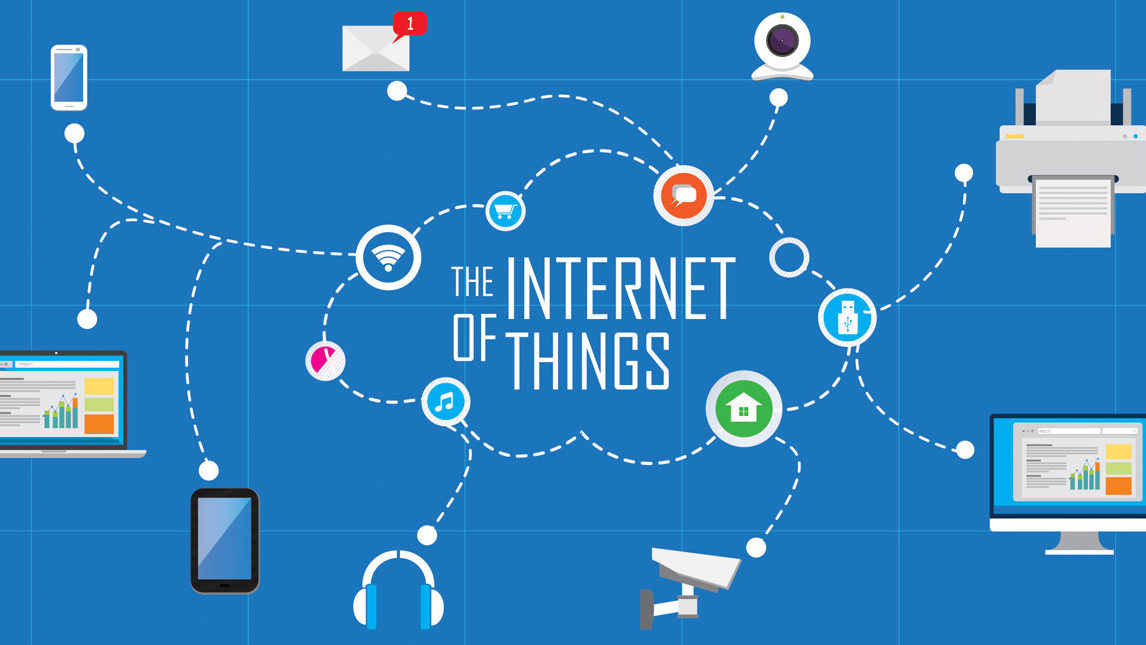The Internet of Things (IoT) is the logical next step in the evolution of the Internet. CISCO estimates that by 2020, there will be over 50 billion connected devices, including wearables, home devices and automobiles. In other words, the Internet of Things (IoT) is driving growth in data much faster than what could be achieved by mobile phones alone.
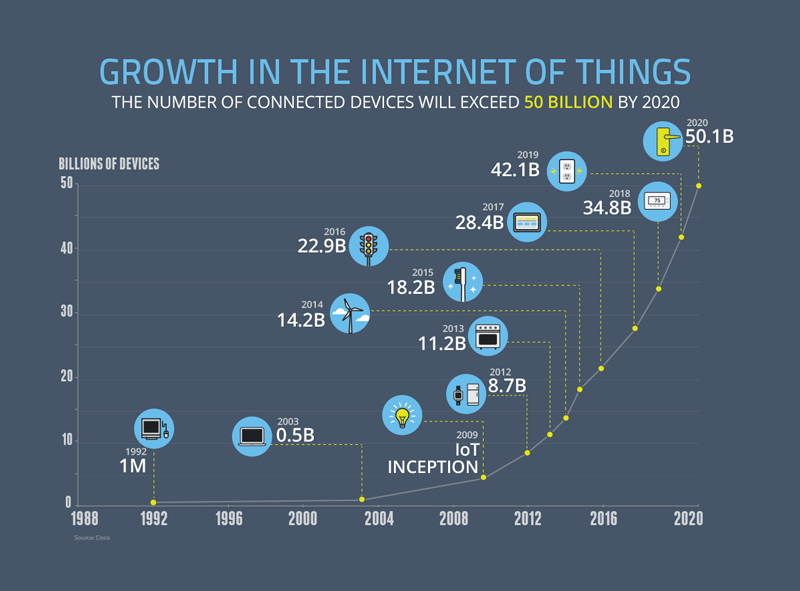
It is important to remind we can measure the IoT market size along four major metrics:
– The number of connected devices (measured in billion units)
– The generated revenue via IoT (measured in billion USD)
– The total economic value of IoT (measured in trillion USD)
– The amount of IP-traffic (measured in exabytes per month)
Bear in mind that the growth of the IoT is spurred by decreasing costs of hardware, such as sensors, together with the ease and availability of wireless connectivity.
It’s also important to understand that the Internet of Things is not just about technology but a reality, comprising various technologies and at the same time part of a broader technological and societal/business picture. And it seems that nothing is off limits — internet-connected ink for tattoos, mascara and contact lenses have already been developed, making the potential for the type and volume of data collection seem endless.
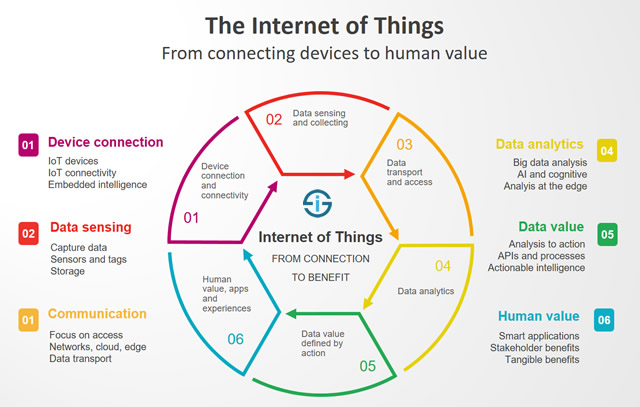
That said, there are lots of ways the devices of the Internet of Things may affect the economy.
I think it could be an interesting exercise to draw the value constellation map of IoT market. It will allow you to get a detailed picture of the current market situation and competition across the players.
As of June 2017 the main areas of Internet of Things investments (industries and use cases) include manufacturing operations, transportation, smart grid technologies, smart buildings and, increasingly, consumer Internet of Things and smart home automation.
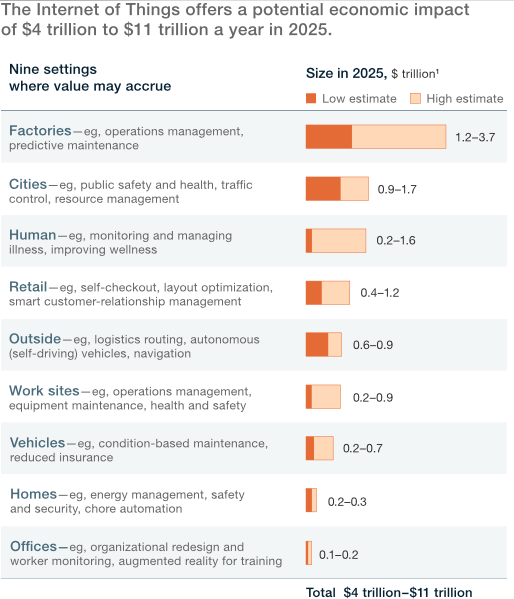
That said, the IoT is also poised to disrupt other industries, such as insurance, where the ability to have sensors on just about anything can mean early detection of all kinds of risks and dangers, and could allow them to reward customers for adopting these devices, or penalize them for what they consider risky behavior (like speeding).
The IoT will further automate processes and increase efficiency, which will affect companies’ bottom lines. With embedded technology that can communicate conditions immediately, there can be great reductions in waste of perishable goods, materials lost to manufacturing issues, time lost to unexpected machine or system breakdowns, and energy consumption, resulting in cost savings.
By the other side, having a look at the IoT consumer market, by all interconnected devices we can get the right customer data rather than scale. It represents the new competitive edge.
According to Goldman Sachs, there are five main IoT verticals of adoption: wearables, connected cars, connected homes, connected cities and industrial internet. The first three are those most relevant to search, as they are related to consumer intent and behavior.
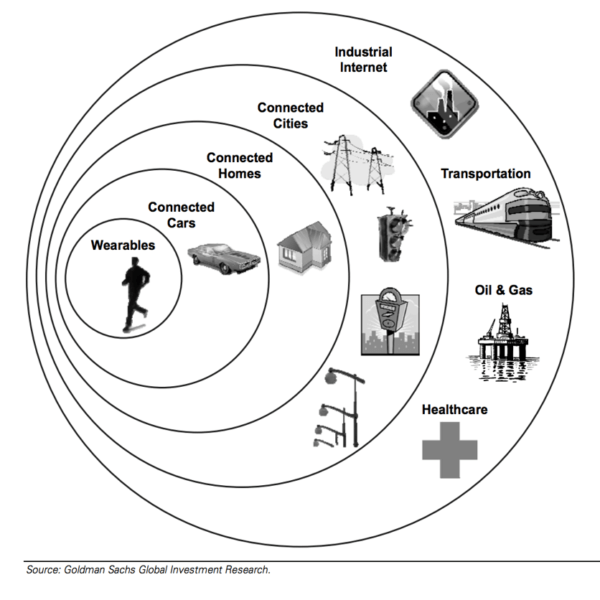
Think about the opportunity to analyze the offline consumer behavior, which is better at predicting online actions: there’s been a lot of attention focused on understanding online actions and whether they drive offline visits, i.e., the ability to attribute store visits to online marketing efforts. Yet perhaps the opposite is even more important: measuring offline actions to predict online behavior. While measuring offline behavior has, to date, been largely reliant on location of mobile devices, IoT devices now bring a much greater diversity of data into play.
In conclusion, the Internet of Things is an essential driver for customer-facing innovation, data-driven optimization and automation, digital transformation and entirely new applications, business models and revenue streams across all sectors.
Speaking about order of magnitude:
1- For every person living on earth, there will be at least 2, maybe even 6 connected “things” by 2020.
2- Creating revenue opportunities for companies beyond what Apple, Google, and Facebook are selling together today.
3- Surpassing the economic output of Germany within the next 10 years.
… and don’t forget to have a reflexion about how it will impact the Findability… 😉
Food for thoughts…
